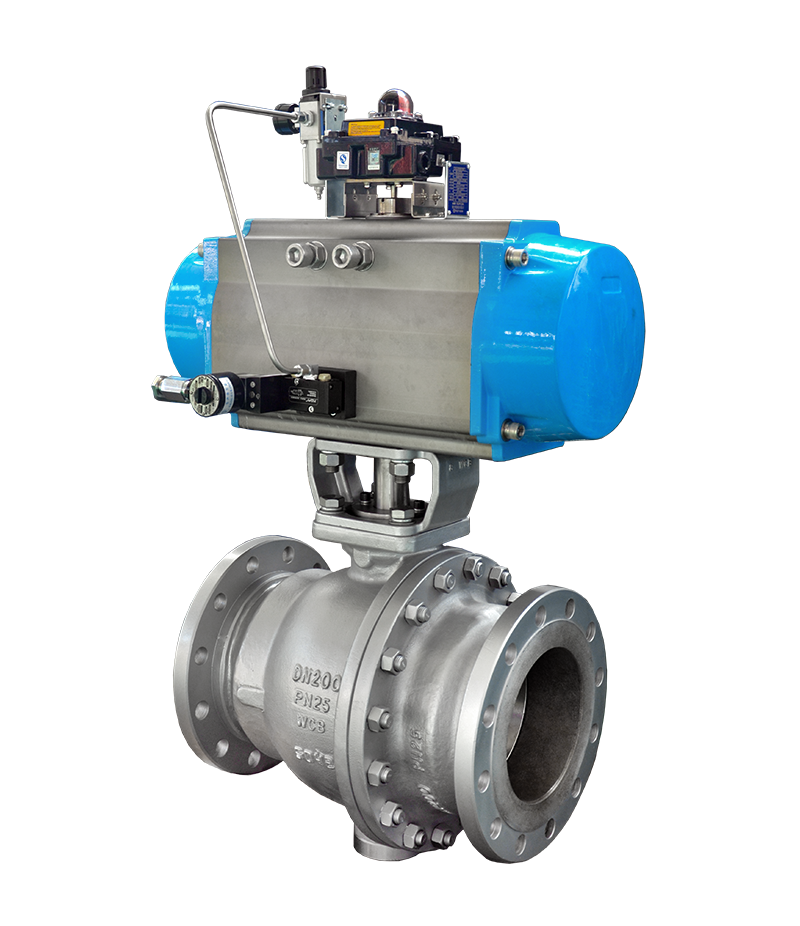Jan. 06, 2020
The ball valve is a device used in the pipeline to cut off, distribute and change the direction of medium flow. In use, it only needs to be rotated by 90 degrees and can be closed tightly with a small torque. What do I need to pay attention to when using a ball valve? O ball valve supplier introduces the precautions for using the ball valve. I hope it can help everyone.
1. Dismantling and disassembling operations must be carried out after confirming that the pressure on the upstream and downstream pipes of the ball valve has been relieved.
2. Non-metal parts should be removed from the cleaning agent immediately after cleaning, and should not be soaked for a long time.
3. The bolts on the flange must be tightened symmetrically, gradually and evenly during assembly.
4. The cleaning agent should be compatible with rubber parts, plastic parts, metal parts and working medium (such as gas) in the ball valve. When the working medium is gas, gasoline (GB484-89) can be used to clean metal parts. Non-metal parts should be cleaned with pure water or alcohol.
5. Each single ball valve component disassembled can be cleaned by dipping. Metal parts with non-decomposed non-metal parts can be scrubbed with a clean and fine silk cloth impregnated with cleaning agent (to prevent the fibers from falling off and sticking to the parts). When cleaning, all grease, dirt, glue, dust, etc. that adhere to the wall must be removed.
6. When disassembling and reassembling the ball valve, care must be taken to prevent damage to the sealing surfaces of the parts, especially non-metallic parts. Special tools should be used when removing the O-rings.
7. After cleaning, wait for the wall cleaning agent to evaporate (can be wiped with silk cloth not soaked with cleaning agent) for assembly, but do not leave it for a long time, otherwise it will rust and be polluted by dust.
8. New parts also need to be cleaned before assembly.
9. Lubricate with grease. The grease should be compatible with the ball valve metal materials, rubber parts, plastic parts and working medium. When the working medium is gas, for example, special 221 grease can be used. Apply a thin layer of grease to the surface of the seal installation groove, apply a thin layer of grease to the rubber seal, and apply a thin layer of grease to the sealing and friction surfaces of the valve stem.

O Ball Valve
10. Metal debris, fibers, grease (except those specified for use) shall not be allowed to contaminate, adhere or stay on the surface of parts or enter the cavity during assembly.
Ball valve installation, preparation before installation of O ball valve.
1. The front and rear pipes should be coaxial, and the sealing surfaces of the two flanges should be parallel. The pipeline should be able to bear the weight of the ball valve, otherwise the pipeline must be properly supported.
2. Purge the pipeline before and after the valve to remove the oil, welding slag and all other impurities in the pipeline.
3. Check the ball valve's mark and find out that the ball valve is intact. Opening and closing the valve several times confirmed that it worked properly.
4. Remove the protective pieces on the connecting flanges at both ends of the ball valve.
5. Check the valve hole to remove any possible dirt, and then clean the valve hole. Even small particles of foreign matter between the seat and the ball may damage the seat sealing surface.
Ball valve installation:
1. Install the ball valve on the pipeline, and either end of the ball valve can be installed on the upstream end. The handle-driven ball valve can be installed anywhere on the pipe. However, the gearbox or pneumatic ball valve should be installed upright, that is, installed on a horizontal pipe, and the drive is above the pipe.
2. Install a gasket between the valve flange and the pipeline flange according to the design requirements of the pipeline.
3. The bolts on the flange should be tightened symmetrically, successively and evenly.
4. Connect the pneumatic pipeline (when using a pneumatic driver).
Inspection after ball valve installation
1. Operate the on-off ball valve of the driver several times, and it should be flexible without stagnation, confirming that it works normally.
2. According to the requirements of pipeline design, check the sealing performance of the flange joint surface between the pipeline and the ball valve.
We are ball valve supplier, if you have any demand for our products, please feel free to contact us.
Headquarter Add.: SUPCON Park, No.309 Liuhe Road, Binjiang District, Hangzhou, 310053, China.
Tel.: +86 571 8111 9774
Fax: +86 571 8111 9737
E-mail: [email protected]
